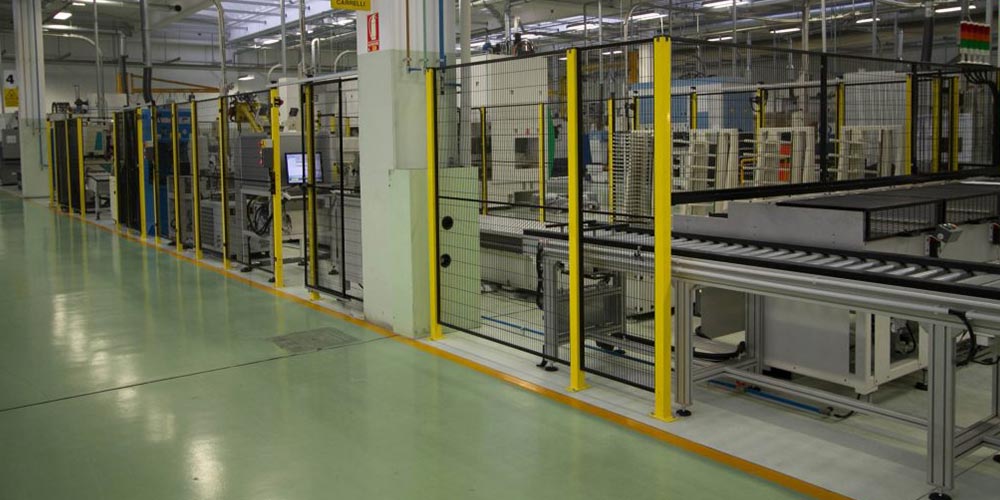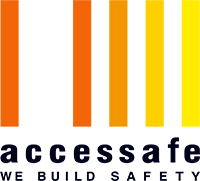
Accessafe supports manufacturers and end-users in CE marking new or modified machines, machine assemblies, or self-built machinery.
The CE Declaration of Conformity is an essential document that certifies that a machine or plant meets the safety and health requirements of the applicable regulations, ensuring its market entry and safe use.
Accessafe manages the entire CE marking process in accordance with the Machinery Directive 2006/42/EC and the EU Machinery Regulation 2023/1230.
The required steps for CE marking machines or machine assemblies include:
- Risk assessment following EN ISO 12100 and verification of correct application of general safety principles
- Verification of applicable essential safety and health requirements
- Verification of compliance with all relevant harmonized standards (types A, B, and C) for the machine under analysis
- Creation of a safety design with technical solutions to mitigate the identified risks
- Creation of operation and maintenance manuals
- Creation of technical files
- Performance of required measurements and tests like noise, vibration, electromagnetic compatibility, stopping times, etc.
- Analysis, verification, and validation of safety control circuits according to EN ISO 13849-1, EN ISO 13849-2
- Creation of the Declaration of Conformity and application of the relevant label
It is possible, under certain requirements, to act as an Authorized Representative: Accessafe can assume the role of “Authorized Representative” in carrying out the CE marking according to the new Machinery Regulation.
Roles and tasks of the authorized representative:
The authorized representative performs the tasks specified in the mandate received from the “manufacturer.” The representative is authorized to:
a) Maintain “technical documentation” and the “EU Declaration of Conformity” available to national market surveillance authorities for a period of at least 10 years from the date the product was placed on the market;
b) Provide, upon request from a competent national authority, all “information” and “technical documentation” needed to demonstrate the product’s “conformity,” in either paper or digital form;
c) Cooperate, at the manufacturer’s expense and under their sole responsibility, with the competent national authorities regarding any action to eliminate the risks presented by a product under the scope of Regulation 2023/1230.

HOW TO DRAFT THE TECHNICAL FILE
The technical file must prove the machinery conformity to the requirements of the current directive relatively to design, manufacturing and machinery operation.
More in detail, the technical file includes the manufacturing file composed by:
- a general description of the machine
- documentation regarding the risk assessment which must report the procedures which have been followed, including:
- List of essential safety requirements and health protection relative to the machinery
- Implemented protection measures to eliminate the identified hazards or to reduce risks
- Report of residual risks connected to the machinery, if they exist
- report of health & safety tests carried out (noise- vibration -AOR -electromagnetic fields – electromagnetic compatibility – electric safety 60204-1)
- validation of software with safety functions as required by UNI EN ISO 13849-1:2016 and UNI EN ISO 13849-2:2013 standards.
- (if present) copy of the CE declaration of conformity of machines or other products incorporated in the machine
- machinery layout and control circuit drawings Also the necessary description and explanation to understand how the machinery operates.
- standards e and technical specifications applied which report the essential safety requirements and health protection described in such standards.
- analysis and testing of control circuits with safety functions(PL UNI EN ISO 13849-1:2016 & SIL – IEC 61508)
- machinery instructions (user and maintenance manual)
- detailed and complete drawings, including calculation notes, testing results, certification. All documentation must allow for machinery conformity verification regarding essential safety requirements and health protection.
- any technical report which provides test results carried out by the manufacturer himself or any external appointed by the manufacturer or his authorised representative
- validation of control circuits with safety functions according to UNI EN ISO 13849-1:2016 and UNI EN ISO 13849-2:2013 (e.g. carried out with WS System)
- (if present) declaration of incorporation for the included partly-completed machinery with the pertinent assembly instructions
In the case of serial production, the manufacturer must carry out all the necessary research and testing on the components and accessories or on the entire machine.
This process establishes if the machinery can be assembled and put into service in appropriate safety conditions after its design or production.
The technical files must include all reports and pertinent results.
WE FOLLOW ALL STAGES OF THE PROJECT FROM RISK ANALYSIS TO SAFE PLANT COMMISSIONING.

DUE DILIGENCE MACHINERY PARK

RISK ASSESSMENT

SAFETY DESIGN

SAFETY COMPLIANCE

SAFETY FUNCTION VALIDATION

CE MARKING

DUE DILIGENCE MACHINERY PARK

RISK ASSESSMENT

SAFETY DESIGN

SAFETY COMPLIANCE

SAFETY FUNCTION VALIDATION



